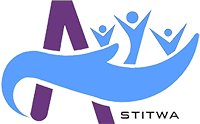Childhood cancers form a rare and heterogeneous group which fortunately have a higher cure rate than adult cancers. Cancer in children is one of the emerging non-communicable diseases in Nepal with significant morbidity and mortality. Significant efforts are being made at the government and nongovernment level to provide awareness, early diagnosis, and effective treatment to improve the cure rate of children with cancer. The major challenges include: lack of education, late diagnosis, advanced disease at presentation, financial problems, geographical and transportation difficulties, and inconsistent supply of chemotherapy medicines.
According to WHO, each year, approximately 400,000 children and adolescents of 0-19 years old are diagnosed with cancer The most common types of childhood cancers include leukemias, brain cancers, lymphomas and solid tumours, such as neuroblastoma and Wilms tumours. In high-income countries, where comprehensive services are generally accessible, more than 80% of children with cancer are cured whereas in low- and middle-income countries it is estimated only 15-45% are cured.
A report published from Nepal Health Research Council 2018 shows that of the estimated 56.9 million deaths globally, over 40.5 million deaths (71%) were due to Non-Communicable Diseases (NCDs) in 2016. This is disproportionately high in Low and Middle Income Countries (LMICs) with over three quarters of NCD deaths (31.5 million) occurring in LMICs .The four major NCDs (cardiovascular diseases, cancer, chronic respiratory diseases and diabetes) are among the top 10 leading causes of death globally as well as for Nepal. More than 20 million new cases of cancer are estimated to occur worldwide in 2025, and a majority of them would be in LMICs .
Cancer ranks number as the second globally and fifth leading cause of death for Nepal, accounting for an estimated 11,525 deaths in 2015 . This shows that cancer remains a major public health issue in Nepal. Childhood cancer care delivery in Nepal is primarily through two government hospitals: One is Kanti Children's Hospital (KCH), and the other is Bharatpur Cancer Hospital, Bharatpur. KCH, established in 1970, located in Kathmandu, is a 500-bed tertiary level government children's hospital under the Ministry of Health and Population. In 1990, Dr. A D Shrestha was the first pediatrician to start treating children with cancer at KCH. The first pediatric oncology unit in Nepal was established at KCH in 1994 with four inpatient beds and this has now expanded to 20 beds.
The first trained pediatric oncologist, Dr Kailash Prasad Sah, started protocol based treatment in 1999 after completing training in Alder Hey Children's hospital at Liverpool in UK. There are currently two pediatric oncologists at KCH and they follow a combination of European and American protocols which have been adapted locally. All commonly used chemotherapeutic agents are available in Nepal, although there is some degree of inconsistent supply of drugs. The drugs available include vincristine, methotrexate, 6-mercaptopurine, cyclophosphamide, L-asparaginase, cisplatin, carboplatin, and etoposide. These are all available free of charge to patients as funded by the Kanti Oncology Fund and Ministry of Health. The government of Nepal contributes approximately US ,000 per child for treatment.
Your small contribution can change our childhood Cancer patients life
Join us now to make your impact
The foundation was established with an aim to demote the culture of
redundant expenditure in social and religious functions.

